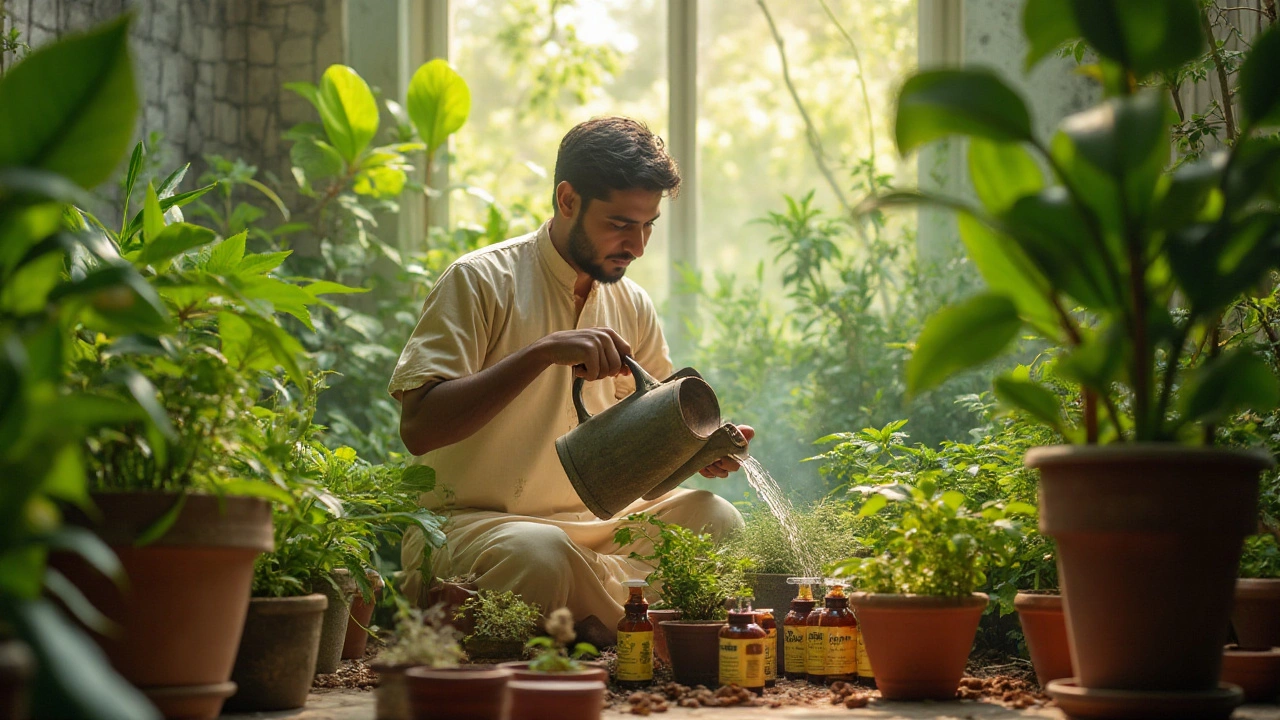Plant Growth Liquids – Simple Ways to Supercharge Your Garden
If you want your plants to grow faster and stay healthy, liquid feeds are a solid choice. Unlike dry granules, these liquids dissolve in water and reach the roots right away. That means you see results quicker and you can fine‑tune the nutrition for each growth stage.
Plant growth liquids are basically concentrated nutrients mixed with water before you apply them. They can contain nitrogen, phosphorus, potassium, plus micronutrients like iron and zinc. Some brands add natural extracts such as seaweed or humic acid to boost stress resistance.
The biggest perk is speed. Liquid nutrients are absorbed within minutes, so your plants get a rapid boost when they need it most. They also let you adjust the strength on the fly – stronger for booming growth, lighter for seedlings or flowering phases.
Why Choose Liquid Fertilizers?
First, they’re easy to apply. A simple watering can or spray bottle does the job, no heavy spreaders needed. Second, the nutrients stay in the root zone where plants can use them, so you waste less compared with slow‑release granules that sit idle in the soil.
Another win is flexibility. Want to feed a single pot of herbs while the rest of the garden gets a light mist? Just dilute a small amount for the herbs and a weaker mix for the lawn. This level of control is hard to get with pre‑mixed dry feeds.
Finally, many liquid feeds are made from organic sources. If you’re into eco‑friendly gardening, look for seaweed extracts, compost tea, or fish emulsion. These give the same nutrition boost without synthetic chemicals.
How to Use Plant Growth Liquids Effectively
Start by reading the label for the recommended dilution ratio. A common mix is one tablespoon per gallon of water, but it varies by product and plant type. Always measure – too strong can burn roots, too weak won’t make a difference.
Apply the mix during the early morning or late afternoon. That’s when plants can absorb nutrients without losing too much water to evaporation. For most veggies, feeding once a week is enough; for fast‑growing herbs, twice a week works well.
Use a clean watering can or a sprayer with a fine mist. If you’re spraying leaves, make sure the solution is gentle – you don’t want to drip excess on the soil and cause runoff.
Store any leftover concentrate in a cool, dark place and keep the container tightly sealed. This preserves the nutrients and prevents accidental spills.
When choosing between organic and synthetic liquids, think about your garden’s goals. Organic options improve soil life over time, while synthetic blends give a quick, precise nutrient hit. Many gardeners blend both to get the best of both worlds.
Avoid common mistakes: don’t apply liquid feed to dry soil, don’t use hard water without checking pH, and never mix different brands together unless the label says it’s safe.
By following these simple steps, you’ll see stronger stems, richer foliage, and more abundant blooms. Give plant growth liquids a try and watch your garden perk up in no time.

Best Liquids for Boosting Indoor Plant Growth
Discover the most effective liquids that boost the growth and health of indoor plants. This article explores various options from traditional water to innovative solutions such as compost tea and specialty fertilizers. Learn about the benefits each liquid provides, how to apply them, and what to avoid. Whether you're a seasoned plant enthusiast or a beginner, these insights aim to enhance your indoor garden's vibrancy.
About
Indoor Plant Care
Latest Posts


How to Loosen Heavy Garden Soil: Simple Additives for Better Texture
By Alden Thorne Jul 30, 2025

Which Fruit Is the King of India? All About Growing the Mango
By Alden Thorne Apr 19, 2025

Discovering Native Indian Plants: A Seasonal Guide
By Alden Thorne Jan 17, 2025
